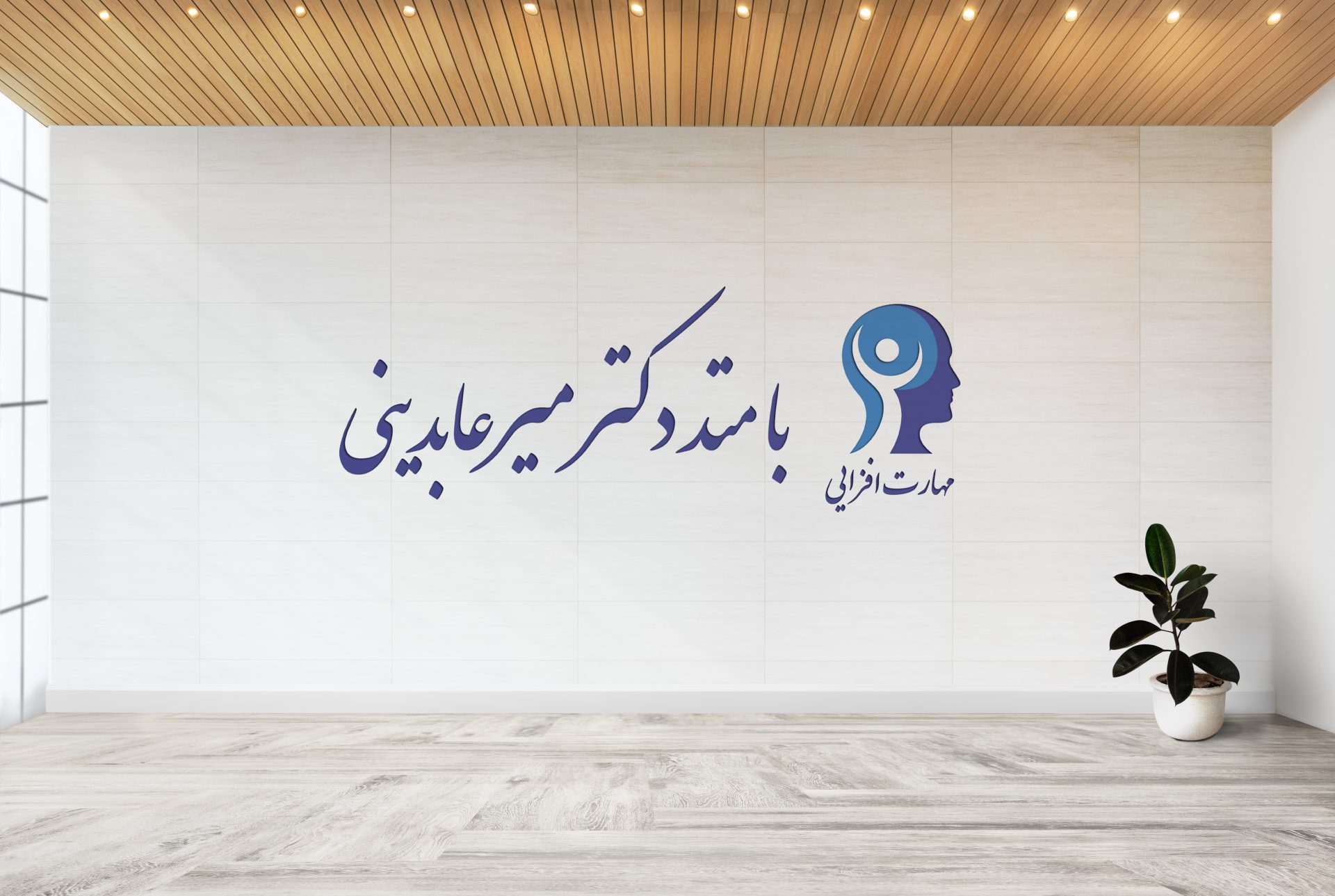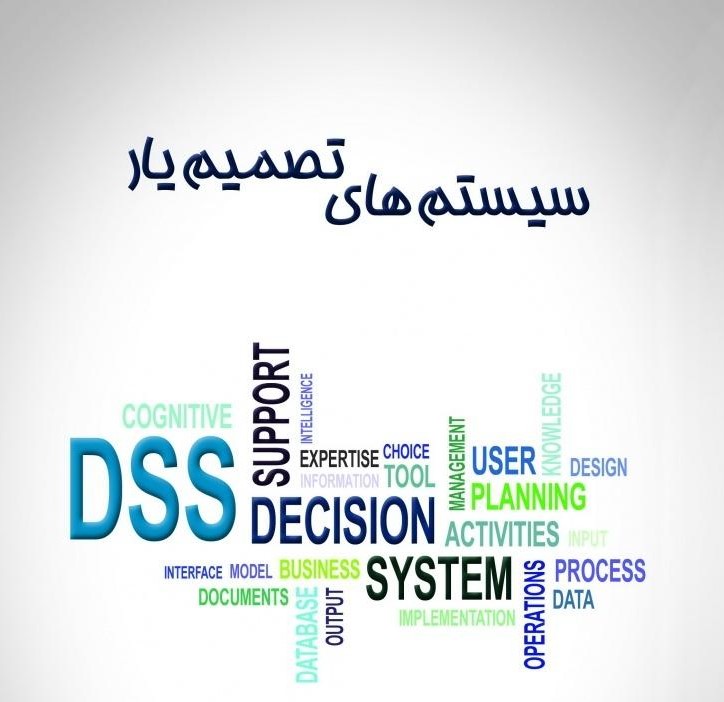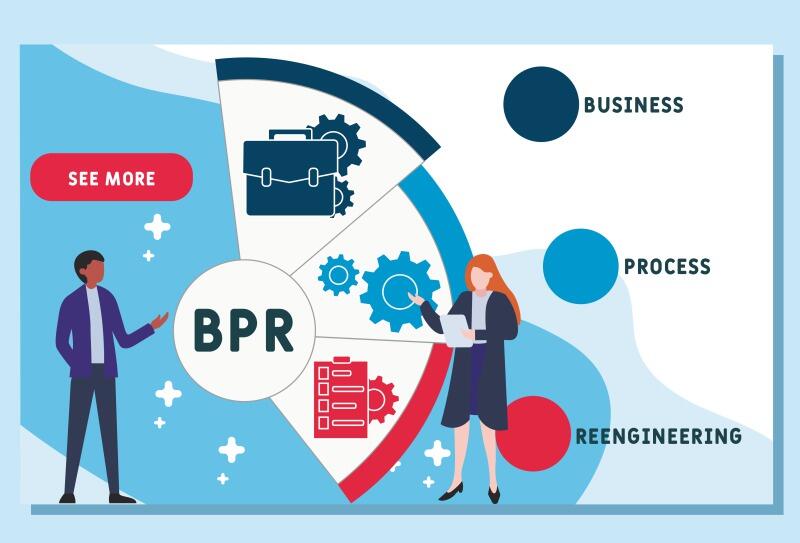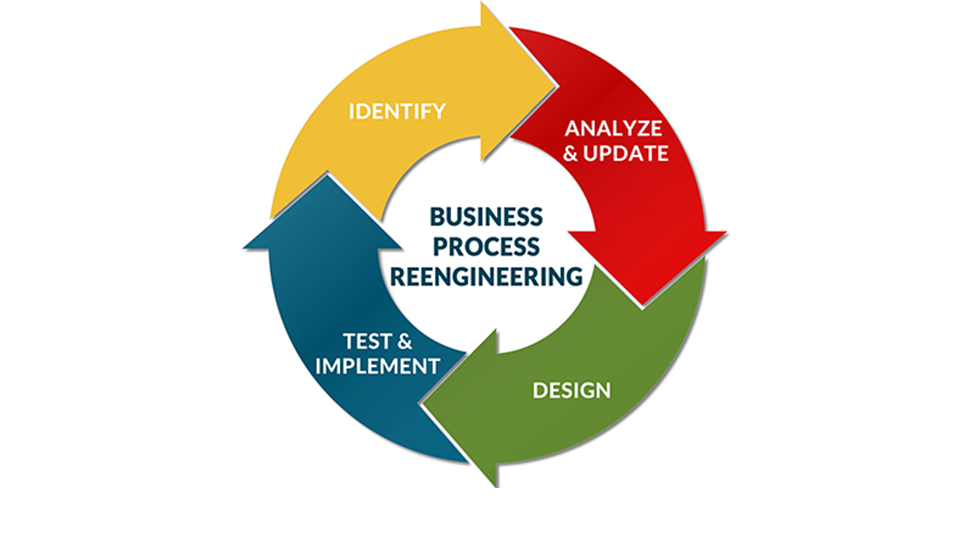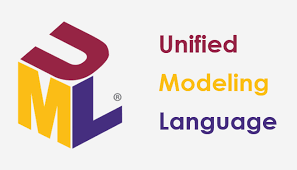سـیـستم های تصمیم یـــار
Decision Support systems
- تفاوت بین مسائل مدیریتی و مسائل محاسباتی و مبتنی بر فناوری و کامپیوتر چیست؟
1. What is the difference between managerial issues and computational and technology-based issues?
مسائل مدیریتی رویگردی فاقد ساختار دارند(بدون ساختار هستند) و درون مایه اصلی آن ها از قابلیت های ذهنی و بخصوص ادراک و خلاقیت جان می گیرند. درحالی که مسائل محاسباتی و تکنولوژی کامپیوتر به طور ذاتی فرآیند ها وجود دارند وکامپیوتر ها قدرتمندی خود را بیشتر در امور ساختار یافته به نمایش گذاشته اند و در زمینه های ادراکی و شناخت توانمندی های محدودی دارند.البته جدیدا به کمک هوش مصنوعی و سیستم های خبره در حوزه ادراک و شناخت و علوم شناختی پیشرفت هایی داشته ایم.
Management problems have an unstructured approach (they are without structure) and their main content comes from mental capabilities, especially perception and creativity. While computational problems and computer technology are intrinsically present in processes, and computers are more powerful. They have exhibited in structured affairs and have limited capabilities in the fields of perception and cognition. Of course, recently with the help of artificial intelligence and expert systems, we have made progress in the field of perception and cognition and cognitive sciences..
- سیستم های اطلاعاتی چیست؟ با رسم شکل و مثال توضیح دهید.
3. What are information systems? Explain with a diagram and an example
سیستم های اطلاعاتی سیستم هایی هستند که داده های ورودی را پردازش می نمایند و آن ها را به اطلاعات تبدیل میکند و هدف اصلی از طراحی و توسعه سیستم های اطلاعاتی جمع آوری پردازش ،تبدیل و توزیع اطلاعات استراج شده از روی داده ها می باشد و خروجی این سیستم ها در قالب گزارشات ،فرم ها و جداول می باشد.
Information systems are systems that process input data and convert them into information, and the main purpose of designing and developing information systems is to collect, process, transform and distribute information extracted from the data and output These systems are in the form of reports, forms and tables.
مثال: سیستم آموزش دانشگاه که داده های خام دانشجویان را گرفته و خروجی ها و گزارشات مختلفی از اطلاعات آن ها تولید میکنند.
مثلا فهرست دانشجویان براساس مرتب سازی حروف الفبا یا فهرست دانشجویان بر اساس رتبه دانشگاهی یا بر اساس سال ورود یا بر اساس معدل و …
Example: University education system that takes the raw data of students and produces various outputs and reports from their information.
For example, the list of students based on alphabetical order, or the list of students based on university rank, or based on the year of entry, or based on GPA, etc.
شکل مربوط به سیستم اطلاعاتی
- سیستم تصمیم یار چیست؟ با مثال توضیح دهید.
3. What is a decision support system? Explain with an example.
یک سیستم تصمیم یار یک سیستم اطلاعاتی تصمیم گیری یه کمک کامپیوتر است که یک مدیر یا گروهی از مدیران را با فراهم نمودن اطلاعات لازم و مرتبط یا دادن پیشنهاد به آن ها در حل یک مشکل نیمه ساختار یافته یاری می کند و همچنین امکان ارتباط آسان بین کاربر و تیم را فراهم می نمایند.
A decision support system is a decision information system, a computer aid that helps a manager or a group of managers by providing necessary and relevant information or giving them suggestions in solving a semi-structured problem, as well as the possibility of easy communication between They provide the user and the team.
مثال:در شرکت خودرو سازی یک سیستم تصمیم یار به مدیرعامل خودروساز(مثلا شرکت خودرو سازی رنو فرانسه)پیشنهاد میدهد بر اساس مخاطب و درآمد و کیفیت خودرو مثلا برای مردم روسیه چه خودروئی را پیشنهاد بدهید.
Example: In an automobile company, a decision support system suggests to the CEO of the automobile manufacturer (for example, the French Renault automobile company) based on the audience, income, and quality of the car, for example, what car should you recommend for the people of Russia.
به عنوان مثال خودرو کپچر با امکانات فول حدود 40 هزار دلار قیمت دارد در حالی که همین خودرو با حذف آپشن های آن به 30 هزار دلار کاهش می یابد و چون فدرت خرید مردم روسیه در حد نهایت 30 هزار دلار است.
For example, the price of a Captur car with full features is about 40 thousand dollars, while the same car is reduced to 30 thousand dollars by removing its options, and because the purchase price of the Russian people is at the limit of 30 thousand dollars.
پس سیستم DSS شرکت رنو-فرانسه این پیشنهاد خودرو با آپشن بسیار کم را میدهد تا مردم روسیه فدرت خرید آن را داشته باشد.
.Therefore, the DSS system of Renault-France offers this car with very few options so that the people of Russia can buy it.
- اجزا سیستم تصمیم یار کدام اند؟ با رسم شکل آن ها را بنویسید.
4. What are the components of decision support system and write them by drawing their shape
شکل کلی یک سیستم تصمیم یار به صورت زیر است:
نمایش یک سیستم تصمیم یار
همچنین نمایش دقیق تر از کلیه اجزا سیستم تصمیم یار به صورت زیر است:
Also, a more detailed representation of all the decision support system components is as follows:
- انواع سیستم های پشتیبانی مدیریت کدام اند؟
5. What are the types of management support systems?
:Managerial sup sys(MSS)
سیستم های پشتیبان مدیریت سیستم های کامپیوتری هستند که به روش های مختلف فرآیند های مدیریتی را برای مدیر آسان میکند که عبارتند از:
Management support systems are computer systems that make management processes easier for managers in different ways, which include:
الف)سیستم های تصمیم یار یا DSS که پرکاربرد بوده و بطور خاص برای تصمیم گیری استفاده می شود.
A) Decision support systems or DSS that are widely used and specifically used for decision making
ب)سیستم اطلاعات مدیران ارشد EIS
b) EIS senior managers information system
Executive Information System این سیستم برای اطلاعات استراتژیک مدیران سطح بالای سازمان طراحی میشود و هدف آن ها پشتیبانی مدیران با دسنرسی آسان و فوری به اطلاعات کلیدی موردنظرشان برای رسیدن به مقاصد سازمانی میباشد. و از نمودار های گرافیکی و بان ک های اطلاعاتی داخل و خارج سازمانی نیز استفاده می نمایند.
This system is designed for the strategic information of high-level managers of the organization, and their goal is to support managers with easy and immediate access to the key information they want to achieve organizational goals. And they also use graphic charts and information banks inside and outside the organization.
ج)سیستم های تصمیم یار گروهی GDSS
c) Group decision support systems
Group Des-Sup-Sys در این نوع سیستم ها مدیر به تنهایی تصمیم نگرفته و عمل تصمیم گیری بر اساس توافق گروهی اتخاذ میگردد.
In this type of systems, the manager does not make a decision alone, and the decision-making process is based on group agreement
د)برنامه ریزی منابع سازمان ERP مدیریت ارتباط با مشتری:
d) ERP resource planning for customer relationship management
مدیریت ارتباط با مشتری:(CRM:Customer Relationship Management)
برنامه ریزی منابع سازمانی(ERP:Enterprise Resource Planning):
سیستم های ERP نوعی سیستم های یکپارچه هستند که به منظور برنامه ریزی موثر و مدیریت یک حرفه ی تجاری از فناوری اطلاعات بهره میبرند.همچنین سیستم های مدیریت زنجیره ی تامینSCM:Supply Chain Management بخشی از ERP میباشند که فرآیند بهره برداری از کالای تجاری را از مرحله درخواست و تولید تا مرحله فروش و تحویل مدیریت مینمایند CRM نیز یعنی سیستم هایی که بخش ارتباط با مشتری را رسیدگی میکنند شامل نظرات مشتری، نیاز مشتری ، انتقاد و شکایات یا پیشنهادات مشتری و همچنین ارتباط موثر با مشتری مانند باشگاه مشتریان شرکت تجاری الفا(کلیه بانک ها ،چای گلستان ، افق کوروش ،رفاه ، شهروند و…)
ERP systems are a type of integrated systems that use information technology for effective planning and management of a commercial business. Also, SCM: Supply Chain Management systems are a part of ERP that controls the process of operating commercial goods from The stage of request and production to the stage of sale and delivery are managed by CRM, i.e. the systems that deal with customer relations, including customer opinions, customer needs, criticism and complaints or customer suggestions, as well as effective communication with customers, such as the customer club of Alpha Commercial Company. All banks, Chai Golestan, Ofogh Korosh, Rafah, Shahrvand, etc.)
6. مدیر کیست؟و چه ویژگی ها و وظایفی دارد؟
6. Who is the manager? And what are his characteristics and duties?
مدیر کسی است که فرآیند بکار گیری موثر و کارآمد از منابع مادی و انسانی را انجام میدهد به طوری که در روندهایی همچون برنامه ریزی،سازمان دهی با بسیج منابع و امکانات و هدایت و کنترل سازمان جهت دستیابی به اهداف سازمانی با توجه به نظام ارزشی مورد قبول کار خود را انجام میدهد. در واقع مدیرفرآیند مدیریت را که شامل تصمیم گیری های مختلف در سازمان است با توجه به تغییرات سریع و پیچیدگی محیطی انجام میدهد، همچین مدیر ترکیبی از علم و هنر است.
A manager is a person who performs the process of effective and efficient use of material and human resources so that in processes such as planning, organizing by mobilizing resources and facilities and directing and controlling the organization in order to achieve organizational goals according to the value system. Acceptance does its job. In fact, the manager performs the management process that includes various decisions in the organization according to the rapid changes and complexity of the environment. Such management is a combination of science and art..
7.آیا مدیریت علم مطلق است یا هنر مطلق و یا ترکیب آن دو؟ توضیح دهید.
7. Is management an absolute science or an absolute art or a combination of the two? Explain.
مدیریت ترکیبی از علم و هنر است.بعد علمی مدیریت اجازه می دهد که آن را بتوانید به صورت سیستماتیک مطالعه ،برنامه ریزی ،هدایت و کنترل و پیش بینی نمائید و بعد هنری آن اجازه می دهد که از شهود و ادراک و خلاقیت و تجربیات خود استفاده کنیم.
Management is a combination of science and art. The scientific dimension of management allows you to systematically study, plan, guide, control and predict it, and its artistic dimension allows you to use your intuition, perception, creativity and experiences let’s use.
8 .سازمان چیست؟ودرهرسازمان چه مولفه هایی وجود دارد؟
8. What is an organization? And what are the components in each organization?
سازمان سیستمی است از منابعی که به جهت پیاده سازیه اهداف مشخص در یک محیط خاص توسط مراکزقدرت ساختار بندی شده اند. و ساختار آن میتواند رسمی یا غیر رسمی باشد هر سازمان ماموریت و هدف ویژه ایی دارد که در راه تحقق آن ماموریت اهداف چشم انداز استراتژی و عملگرد های خود را تنظیم نماید. مولفه های یک سازمان عبارتند از:
Organization is a system of resources that are structured by power centers to implement specific goals in a specific environment. And its structure can be formal or informal. Every organization has a special mission and goal to set its goals, vision, strategy and operations in the way of achieving that mission. The components of an organization are:
تقسیم کار: که شامل تقسیم بندی کارها و طبقه بندی وظایف است تا اهداف تعیین شده در قسمت های مختلف سازمان هماهنگی و کنترل گردد و از بروز تکرار و تداخل وظایف اجتناب به عمل آید.
Division of work: which includes the division of work and the classification of tasks so that the goals set in different parts of the organization are coordinated and controlled and duplication and interference of tasks are avoided.
مسئولیت : یعنی هر فردی مسئولیت ویژه ایی داشته باشد تا نظم و انظباط کاری برقرار شود.
Responsibility: It means that each person has a special responsibility to establish work order and discipline.
3.روابط : برای همکاری افراد در یک گروه و میل به اهداف باید روابط آن ها با هم معلوم گردد.
Relationships: For the cooperation of people in a group and desire for goals, their relationships must be known.
9. سیستم چیست؟ومحیط آن شامل چه مولفه هایی می باشد؟ با رسم شکل نشان دهید.
9. What is the system? And what components does its environment include? Show it by drawing.
سیستم به مجموعه ایی از اجزا وابسته شامل کاربران منابع مفاهیم و رویه ها گفته میشود که به منظور انجام یک کار معلوم یا رسیدن به یک هدف مشترک با هم در ارتباط هستند هر سیستمی داری سلسله مراتب است ،یعنی دارای زیر سیستم ، یعنی سیستم دارای خاصیت سلسله مراتبی است.هرسیستم از 3 بخش ورودی ،پردازش ،خروجی تشکیل شده است.که ای بخش ها توسط یک محیط احاطه می شود و قالبا شامل یک مکانیزم بازخورد می باشد.
A system is a set of dependent components, including users, resources, concepts, and procedures, which are related to each other in order to perform a specific task or achieve a common goal. It is hierarchical. Every system consists of 3 parts: input, processing, and output. These parts are surrounded by an environment and usually include a feedback mechanism.
- تفاوت بین سیستم باز و سیستم بسته و سیستم اصلی و فرعی چیست؟
10. What is the difference between open system and closed system and main and sub system?
سیستم باز،سیستمی است که با محیط فرد درارتباط است و به منظور رسیدن به حالت تعادل پویایی و رشد و تکامل دارد در واقع سیستم باز در مقابل عوامل محیط خارجی و عوامل متغییر داخلی انطباق پذیری دارند. وبر محیط تاثیرگذاری و از محیط تاثیر پذیری دارند.
An open system is a system that is related to a person’s environment and has dynamics and growth and evolution in order to reach a state of balance. In fact, an open system has adaptability against external environmental factors and internal variable factors. They are influenced by the environment and influenced by the environment.
سیستم بسته سیستمی است که اجزا آن و مولفه های آن با محیط بیرون هیچگونه تعامل اثر گذاری یا اثر پذیری ندارند و با محیط بیرون هیچگونه تعاملی انجام نمیدهند مثال سیگنال و انرژی های بیو الکتریک و در سلول های خاکستری مغز که در خودشان وجود دارد. آب داخل شوفاژ که در اثر گرمایش و سرمایش دائما جا به جا میشود ولی از داخل لوله شوفاژ خانه خارج می شود.
A closed system is a system whose parts and components do not interact with the external environment and do not interact with the external environment, for example, bioelectrical signals and energies and in the gray cells of the brain that exist in themselves. The water in the heater, which constantly moves due to heating and cooling, but it comes out of the heating pipe of the house.
سیستم گردش خون در بدن انسان در حالت کلی و ظاهری سیستم بسته می باشد.زیرا قلب دائما پمپاژ میکند و خون در بدن جریان می یابد اما از رگ ها خارج نمی شود.
The blood circulation system in the human body is a closed system in general and appearance. Because the heart is constantly pumping and the blood flows in the body, but it does not leave the veins.
سیستم اصلی سیستمی است که هدف غائی و نهائی مارا برآورده میکند مثلا سیستم ناوبری هواپیما که هدف غائی آن پرواز وجابه جایی مسافر آن است.اما یک سیستم اصلی دارای چند سیستم فرعی نیز میباشد که به آن ها زیر سیستم نیز میگویند. نکته: سیستم های اصلی وفرعی تشکیل سلسله مراتب میدهند.
The main system is a system that fulfills our ultimate goal, for example, the navigation system of an airplane, the ultimate goal of which is to fly and move its passengers. But a main system also has several sub-systems, which are also called sub-systems. Note: The main and sub-systems form a hierarchy.
- مهم ترین وظایف مدیریت کدام اند آن ها را بنویسید و توضیح دهید با رسم شکل و ثانیا درجه موفقیت سازمان یا بهره وری سازمان چگونه اندازه گیری میشود؟
11.What are the most important tasks of management, write them down and explain them by drawing a picture, and secondly, how is the degree of success of the organization or the productivity of the organization measured?
مهم ترین وظایف سازمان با POC3 که عبارتند از:
The most important tasks of the organization with POC3 are:
- انواع سطوح مدیریتی کدام اند؟ و نقش های مدیریتی را بنویسید.
12.What are the types of management levels? And write management roles.
بطور کلی 3 سطح زیر برای طبقه بندی سطوح مدیریتی در نظر گرفته میشود:
In general, the following 3 levels are considered to classify management levels:
1.سطح عالی: که بالاترین سطح مدیریتی در سازمان است.و مدیران عالی در سطح گسترده درگیر برنامه ریزی های مجتمع و بلند مدت میشود و با مقتضیات زمانی و مکانی و متغییرهای متنوعی سروکار دارند و عملگرد کلی واحد های اصلی سازمان را ارزیابی میکنند و درباره ی موضوعات و مسائل بزرگ در سازمان با مدیران سطوح پایین تبادل نظر میکنند و بیشترین زمان خود را با مدیران یا افراد خارج ازسازمان میگذرانند.
Top level: which is the highest management level in the organization. And top managers are widely involved in complex and long-term planning and deal with time and place requirements and various variables and evaluate the overall performance of the main units of the organization and about They discuss big issues and issues in the organization with lower level managers and spend most of their time with managers or people outside the organization.
2.سطح میانی: مدیران میانی مانند حلقه واسطه ایی میان مدیران عملیاتی و مدیران عالی عمل میکنند این مدیران بطور مستقیم به مدیران مالی گزارش میدهند و وظیفه آن مدیریت و نظارت بر سرپرستان است بیشتروقت مدیران میانی به تحلیل داده ها آماده سازی اطلاعات برای تصمیم گیری تنظیم برنامه و طرح های عملی مبتنی برتصمیم های مدیریت عالی و برنامه ریزی فعالیت های سرپرستان و هدایت آن ها برای رسیدن به اهداف سازمانی است و همچنین تنظیم برنامه های میان مدت را بر عهده دارد.
Middle level: Middle managers act as an intermediary link between operational managers and senior managers. These managers report directly to financial managers and their task is to manage and supervise supervisors. Most of the time of middle managers is to analyze data, prepare information for decision-making, and adjust. The program and practical plans are based on the decisions of the top management and the planning of supervisors’ activities and guiding them to achieve organizational goals, and it is also in charge of setting medium-term plans.
3.سطح عملیاتی (سرپرستی): مدیران عملیاتی در ارتباط مستقیم با کارکنان می باشد و کارکنان را برای انجام کارهای خاص تعیین میکنند.
Operational level (supervision): Operational managers are in direct contact with employees and assign employees to perform specific tasks.
شکل زیر موضوعات رو نشان میدهند.
- بر مبنای طبقه بندی آنتونی انواع شیوه های کنترل مدیریتی کدام اند؟ هرم آن ها را ترسیم نمائید و به اختصار توضیح دهید.
13.Based on Antony’s classification, what are the types of management control methods? Draw their pyramid and explain it briefly.
برنامه ریزی استراتژیک: فعالیت های استراتژیک تصمیماتی هستند که در شرایط خاص میتوانند تغییرات مهم ایجاد کنند در واقع تصمیمات استراتژیک برنامه ریزی بلند مدت را شامل میشوند مثلا یک شرکت خودرو سازی تصمیم میگیرد خط تولید خودروهای هیبریدی یعنی ترکیب سوخت فسیلی و برقی را راه اندازی کند و یا اینکه تصمیم میگیرد برای توسعه صنعت خودرو از یک کشور خارجی برای تولید بیشتر به عنوان یک برنامه بلند مدت آن را به کار گیرد درسند برنامه ریزی بلند مدت سنتی نکات اصلی و عمده استراتژی ها و برنامه ها برای 5 یا 10 سال مشخص میشود و سپس شرکت ها بر اساس این برنامه ها برنامه ریزی های خوردتر بودجه بندی و تخصیص منابع را انجام میدهند اما در اقتصاد دیجیتالی زمان برنامه ریزی به 2 یا 1 سال یا کمتر کاهش یافته است.
Strategic planning: Strategic activities are decisions that can create important changes in certain circumstances. In fact, strategic decisions include long-term planning. For example, a car manufacturing company decides to launch a production line of hybrid cars, which means the combination of fossil fuel and electricity. Or he decides to use it as a long-term plan for the development of the car industry from a foreign country for more production. Traditional long-term planning defines the main points of strategies and plans for 5 or 10 years. Then, based on these plans, companies make detailed budgeting and resource allocation plans, but in the digital economy, the planning time has been reduced to 2 or 1 year or less.
نکته خیلی مهم :فعالیت های استراتژیک از 2 راه به سازمان کمک میکند آن دو راه کدام اند؟
Very important point: strategic activities help the organization in two ways, which are those two ways?
1.فعالیت های پاسخگویی استراتژیک: قادر به پاسخگویی سریع به اقدامات مهم رقیب یا تغییرات اساسی در بازار یا در محیط سازمان میباشد و فناوری اطلاعات جهت انجام و پشتیبانی واکنشی به کار گرفته میشود.اینکه در برنامه ریزی استراتژیک و فعالیت های استراتژیک به جای آن که شرکت منتظر تغییرو ابتکار عمل از سوی رقبا بماند میتواند خود تحول جدیدی را آغاز کند و همچنین اقدامات استراتژیک ابتکاری به وسیله فناوری اطلاعات حمایت میشوند.
1.Strategic response activities are able to quickly respond to important actions of competitors or fundamental changes in the market or in the organization’s environment, and information technology is used to perform and support reactions. In strategic planning and strategic activities, instead of the company Waiting for change and initiative from competitors can start a new transformation and also innovative strategic actions are supported by information technology.
2.کنترل مدیریت(Management control):
فعالیت های مدیریتی که فعالیت ها یا تصمیمات تاکتیکی نیز نامیده میشوند به طور کلی به فعالیت های مدیریت میانی مانند برنامه ریز کوتاه مدت سازمان دهی و کنترل میپردازند بدین منظور از MIS یا سیستم های اطلاعات مدیریت با هدف خلاصه کردن داده ها و تهیه گزارش طراحی شده اند.
Management activities, which are also called tactical activities or decisions, generally deal with middle management activities such as short-term planning, organization and control, for this purpose, MIS or management information systems are designed for the purpose of summarizing data and preparing reports.
3.کنترل عملیاتی(Operational control):
فعالیت های عملیاتی شامل فعالیت های روزمره یا فعالیت های تکنیکی یک سازمان مانند تقسیم وظایف بین کارمندان، ثبت ساعت های کاری یا سفارش و دستور خرید است. این فعالیت های عملیاتی کوتاه مدت هستند و سیستم های پردازش تراکنش و سیستم های سیار از آن ها حمایت میکند، در واقع با توجه به طبقه بندی آنتونی جایگاه مدیر میتواند در سطح مدیریت عملیاتی یا تاکتیکی یا سطح کنترل مدیریت یا تاکتیکی و یا سطح برنامه ریزی استراتژیک یا بلند مدت باشد.
Operational activities include day-to-day activities or technical activities of an organization, such as dividing tasks between employees, recording working hours or ordering and purchasing orders. These operational activities are short-term and transaction processing systems and mobile systems support them. In fact, according to Anthony’s classification, the manager’s position can be at the level of operational or tactical management, or the level of management or tactical control, or the level of strategic or long-term planning.
- انواع تصمیم گیری ها در یک سازمان کدام اند به صورت جدولی و با توجه به نوع کنترل و نوع تصمیم بنویسید.
14.What are the types of decisions in an organization? Write in a table according to the type of control and the type of decision.
| Type of control انواع کنترل | ||||
| Type of decision | کنترل عملیاتی Operational control | کنترل مدیریتی Management control | برنامه ریزی استراتژیک Strategic Planning | پشتیبانی مورد نیاز Support Required |
| ساخت یافته Structured | – حساب دریافتی Account Receivable -ثبت سفارش Register order | گزارشات،تحلیل بودجه،پیشبینی کوتاه مدت،تحلیل خرید،تولید , Reports Budget Analysis, Short- term for Casting, purchase analysis, production | مدیریت مالی (سرمایه گذاری) Financial Management(investment) مکان جدید انبار شرکت The Companys new warehouse location | MIS مدل های علوم مدیریت Mangement Science Models مدل های مالی Financial Models مدل های آماری Statistical Model |
| نیمه ساخت یافته Semi- Structured | -زمان بندی تولید Production Schedule -کنترل انبار Store control | اعتبار سنجی ،تهیه بودجه،طرح بندی کارگاه،زمان بندی بودجه Validation, Budget preparation, workshop planning, budget Scheduling | ساخت کارگاه جدید Construction of a new work shop طراحی محصول جدید New product design طراحی کنترل کیفی Quality Control Design | DSS: Decision support systems |
| ساخت نیافته (بدون ساختار) unstructured | -انتخاب جلد روی مجله یا انتخاب صفحه لوگو وب سایت Choose the Cover on a magazine or choosing a website logo page -دادن وام به مشتری Loan the customer | تبادل نظر Exchange of views استخدام مدیر Hiring Manager روابط عمومی جدید New Public Relations سخنرانی Speech خرید محصولات جدید سخت افزار Buy new hardware products | طراحی تحقیق وتوسعه جدید طراحی سیستم عامل جدید با طراحی گرافیگی بیشتریا طراحی لباس نانو توسعه باطری ها جدید و با دوام زیاد | سیستم تصمیم یار Decision support systems سیستم خبره Expert System شبکه عصبی Neural Network |
| پشتیبانی مورد نیاز Support Required | -سیستم اطلاعات مدیریت MIS: Management information sustem -علوم مدیریت Management Science | MIS DSS ES EIS | DSS ES شبکه عصبی | |
15.کارکرد های مدیریتی در سطوح مدیریتی گوناگون با توجه به مولفه های مختلف عملگردهای مدیریتی کدام اند؟با ترسیم جدول بنویسید.
5.What are the management procedures at different management levels according to the different components of management procedures? Write by drawing a table.
16.مدل سایمون(Simon)چیست؟و دارای چه فازهایی می باشد با ترسیم شکل توضیح دهید.
16. What is Simon’s model? And what phases does it have? Explain by drawing a figure.
هربرت سیمون یک دانشمند مشهور آمریکایی در علوم اجتماعی و سیاسی است که مشارکت های فکری او بر تفکر و عمل بسیازی از رشته ها تاثیر گذاشته است. ازنظر سیمون مدیریت برابر با تصمیم گیری از علاقه عمده او به تجزیه و تحلیل اینکه تصمیمات چگونه اتخاز میگردند وچگونه میتوان تصمیمات موثر گرفت باعث شد در این زمینه مطالعه کند.سیمون اعتقاد دارد که در یک سازمان افراد و فرد تصمیم گیرنده به محض یافتن اولین راه حل آن را برمیگزیند و از جستجو برای یافتن بهترین حالت دست میکشد در حالی که میتوان ابتدا کلیه راه های ممکن برای حل مسئله را بررسی نمود و هر روش را به دقت ازریابی و نتایج پیش بینی شده آن را درجه بندی نمود و سپس از بین راه حل های قابل اجرا راه حل بهینه را انتخاب نمود.
Herbert Simon is a famous American scientist in social and political science whose intellectual contributions have influenced the thinking and practice of many disciplines. According to Simon, management is equal to decision-making. His main interest in analyzing how decisions are made and how effective decisions can be made made him study in this field. Simon believes that in an organization, people and decision-makers as soon as they find the first way. He chooses to solve it and stops searching for the best situation, while one can first check all the possible ways to solve the problem and carefully evaluate each method and grade its predicted results, and then choose from among the ways. Workable solutions chose the optimal solution.
ادامه شرح مدل سایمون
1.فاز هوشمندی(Intelligence level):
جمع آوری و سازمان دهی دانش در این قسمت قرار میگیرد.هوشمندی در تصمیم گیری شامل پیمایش متناوب و یا مداوم سیستم است.
The collection and organization of knowledge is placed in this part. Intelligence in decision-making includes intermittent or continuous navigation of the system.
2.فاز طراحی (Design level):
هدف این مرحله شناسایی و ارزیابی راه حل های مختلف انجام یک کار میباشد و تصمیم گیرنده و گروه مشاوره او راه حل های ممکن را طرح میکند که هرکدام مستلزم مجموعه ایی از اعمال است که باید انجام گیرد.
The purpose of this stage is to identify and evaluate different solutions for doing a task, and the decision maker and her consulting group propose possible solutions, each of which requires a set of actions that must be performed.
نکته: مدل چیست؟
Tip: What is the model?
مدل یک نمایش ساده و مجلل از واقعیت است و موجب ساده شدن حل مسئله و ارزیابی سریع و ارزان راه حل های مختلف میشود.یک مدل باید خاصیت پاسخگویی به تست حساسیت را داشته باشد و به دنیای واقعی و نحوه شناخت انسان نزدیک باشد.
A model is a simple and luxurious representation of reality and makes problem solving easier and quick and cheap evaluation of different solutions. A model should have the ability to respond to the sensitivity test and be close to the real world and the way humans know.
3. فاز انتخاب(Selection phase):
در این فاز یکی از گزینه های موجود بر اساس اصول معیار ها و اهداف تعریف شده در فاز مدلسازی به عنوان راه حل مسئله انتخاب میشود این فاز شامل جستجو ارزیابی و پیشنهاد یک راه حل مناسب برای مدل است .
In this phase, one of the available options is selected as a solution to the problem based on the principles of criteria and goals defined in the modeling phase. This phase includes searching, evaluating and proposing a suitable solution for the model.
4. فاز اجرا(execute phase):
مهم ترین عملیات در این فاز سنجش تحلیل ها وپیشنهادات ،ارزش گزاری نتایج و اطمینان از تصمیم اتخاذ شده ایجاد طرح اجرایی تامین منابع و اجرای راه حل می باشد.
The most important operation in this phase is evaluating the analysis and proposals, evaluating the results and making sure of the decision made, creating an executive plan for providing resources and implementing the solution.
17.مدیریت دانش چیست؟با ترسیم شکل نحوه ارتباط بین سطوح مدیریت دانش را (مدل پایه ایی ساختمان مدیریت دانش)ترسیم نمائید و به اختصار توضیح دهید.
17.What is knowledge management? Draw and briefly explain the relationship between knowledge management levels (basic model of knowledge management building).
مدیریت دانش سازمان دادن برای دانستن است و کوششی هماهنگ میباشد که جهت تصرف دانش حیاتی سازمان اشتراک دانش میان یک سازمان و برجسته نمودن در حافظه جمعی سازمانی برای بهبود تصمیم گیری افزایش بهره وری و نوآوری است مدیریت دانش شامل تصرف دانش،خود تجربیات با ارزش افزوده کارکنان آسان کردن بازیابی دوباره و نگهداری آن به عنوان دارایی سازمانی است.
Knowledge management is organizing to know and it is a coordinated effort aimed at capturing the vital knowledge of the organization, sharing knowledge among an organization and highlighting it in the organizational collective memory to improve decision-making, increase productivity and innovation. Knowledge management includes the capture of knowledge, experiences with added value. Employees make it easy to recover and maintain it as an organizational asset.
مدل پایه ایی ساختمان مدیریت دانش
Basic model of knowledge management building
18.چرخه سیستم مدیریت دانش کدام است؟ با ترسیم شکل هرگام آن را در چرخه دانشی توضیح دهید.
18.What is the cycle of knowledge management system? Explain by drawing the shape of each step and explain it in the knowledge cycle.
1.خلق دانش: دانش هنگام که افراد روش های نوین انجام کار ها را دریافت یا مهارت جدیدی کسب می نمایند دانش خلق میشود.مثال باز کردن در به صورت سنتی و با استفاده از آیفون.
1.Creation of knowledge: Knowledge is created when people receive new ways of doing things or acquire new skills. For example, opening a door in a traditional way and using an iPhone.
2.کسب دانش: دانش جدید باید ارزشمند تلقی شود و به صورت معقول ارائه گردد.
Acquiring knowledge: New knowledge should be considered valuable and presented in a reasonable manner..2
3.پالایش دانش: دانش جدید باید با شرایط تطبیق داده شود و بدین ترتیب کاربری گردد و با بینش انسانی در راستای حقایق عینی مسائل واقعی به کار گرفته شود.
3.Refinement of knowledge: new knowledge must be adapted to the conditions and thus be used and applied with human insight in line with the objective facts of real issues
4.ذخیره دانش: پس دانش مفید بایستی به شکل منطقی در یک مخزن به گونه ایی ذخیره شود که دیگران نیز در سازمان بتوانند به آن دسترسی داشته باشند.
4.Knowledge storage: Therefore, useful knowledge should be logically stored in a repository so that others in the organization can access it.
5. مدیریت دانش: دانش مانند یک کتابخانه باید بروز نگه داشته شود بررسی های لازم جهت تائید مرتبط بودن و آن بایستی پیوسته انجام شود.
5.Knowledge management: Knowledge, like a library, must be kept up-to-date, the necessary checks to confirm relevance and it must be done continuously.
مثلا کامپیوتر های 1960 تا 1980 و سیستم عامل آن ها و برنامه نویسی آن ها و سخت افزار آن ها منسوخ شده اند باید از چرخه مدیریت دانش خارج شوند.
For example, computers from 1960 to 1980 and their operating systems, their programming, and their hardware are obsolete and should be removed from the knowledge management cycle.
6.انتشار دانش: دانش باید همیشه و همه جا در قالبی مناسب برای هرکسی که در سازمان به آن نیاز دارد قابل دسترس باشد افراد دانش جدید را توسعه داده و شناسایی نمایند یا دانش قدیمی را بروز رسانی کرده و در سیستم جایگزین نمایند.
6.Dissemination of knowledge: knowledge should always and everywhere be available in a suitable format for anyone in the organization who needs it. People can develop and identify new knowledge or update old knowledge and replace it in the system.
